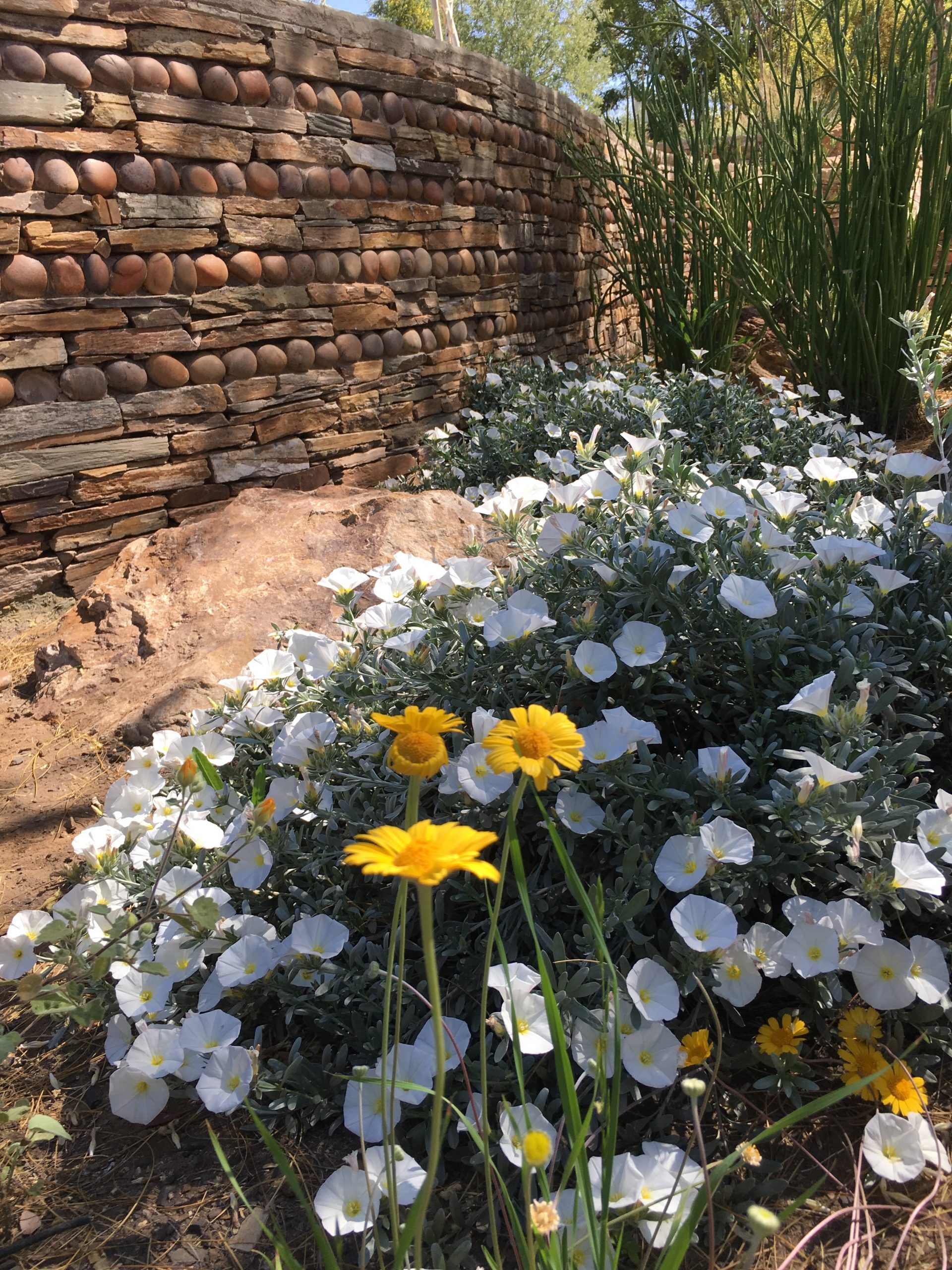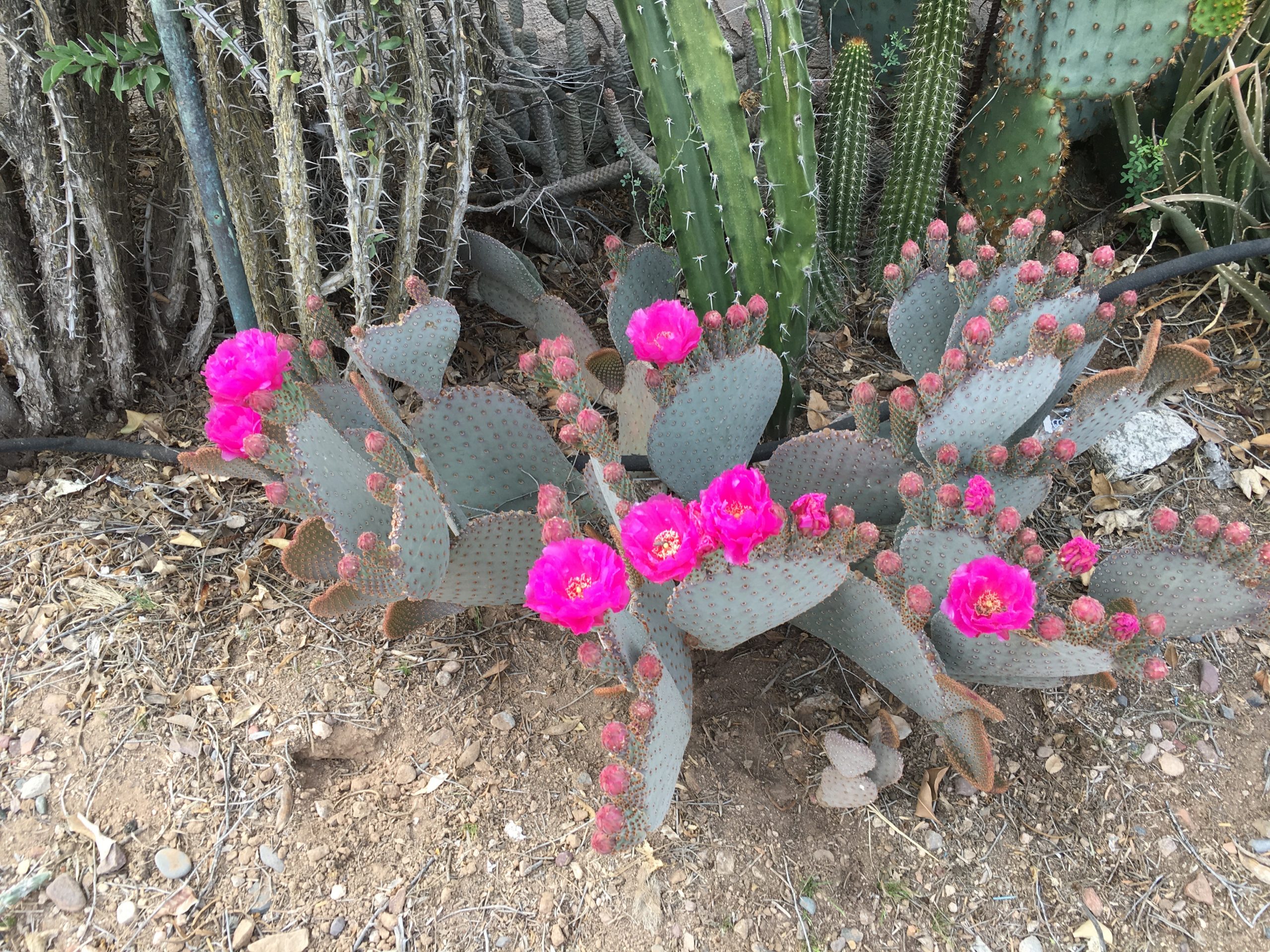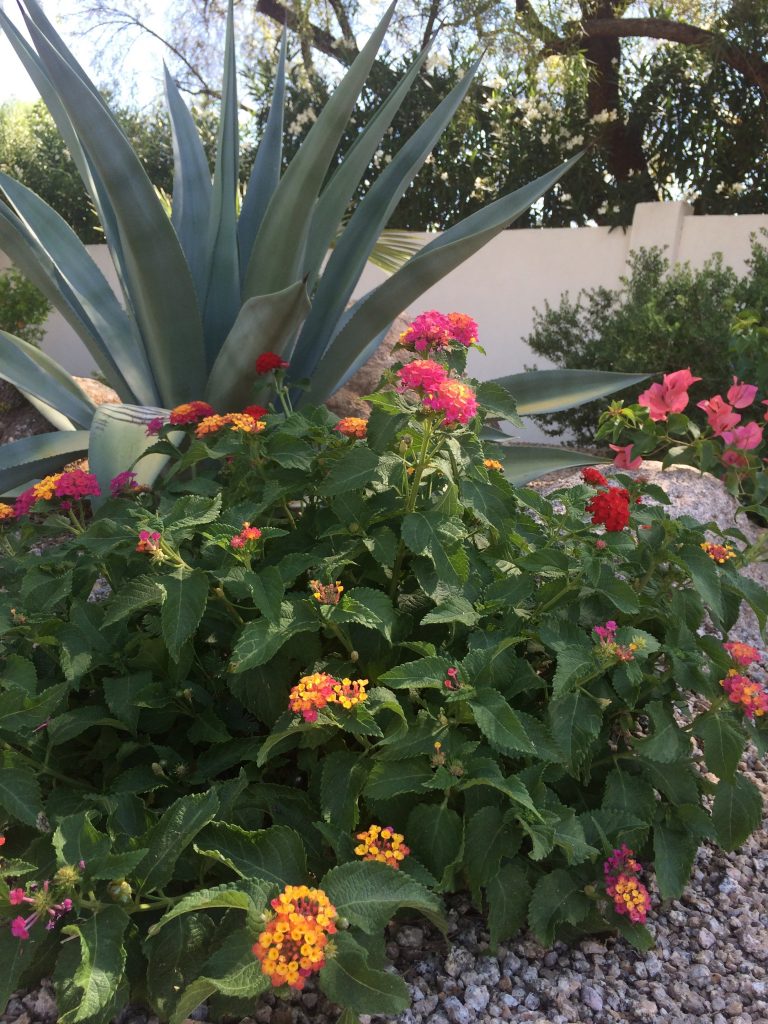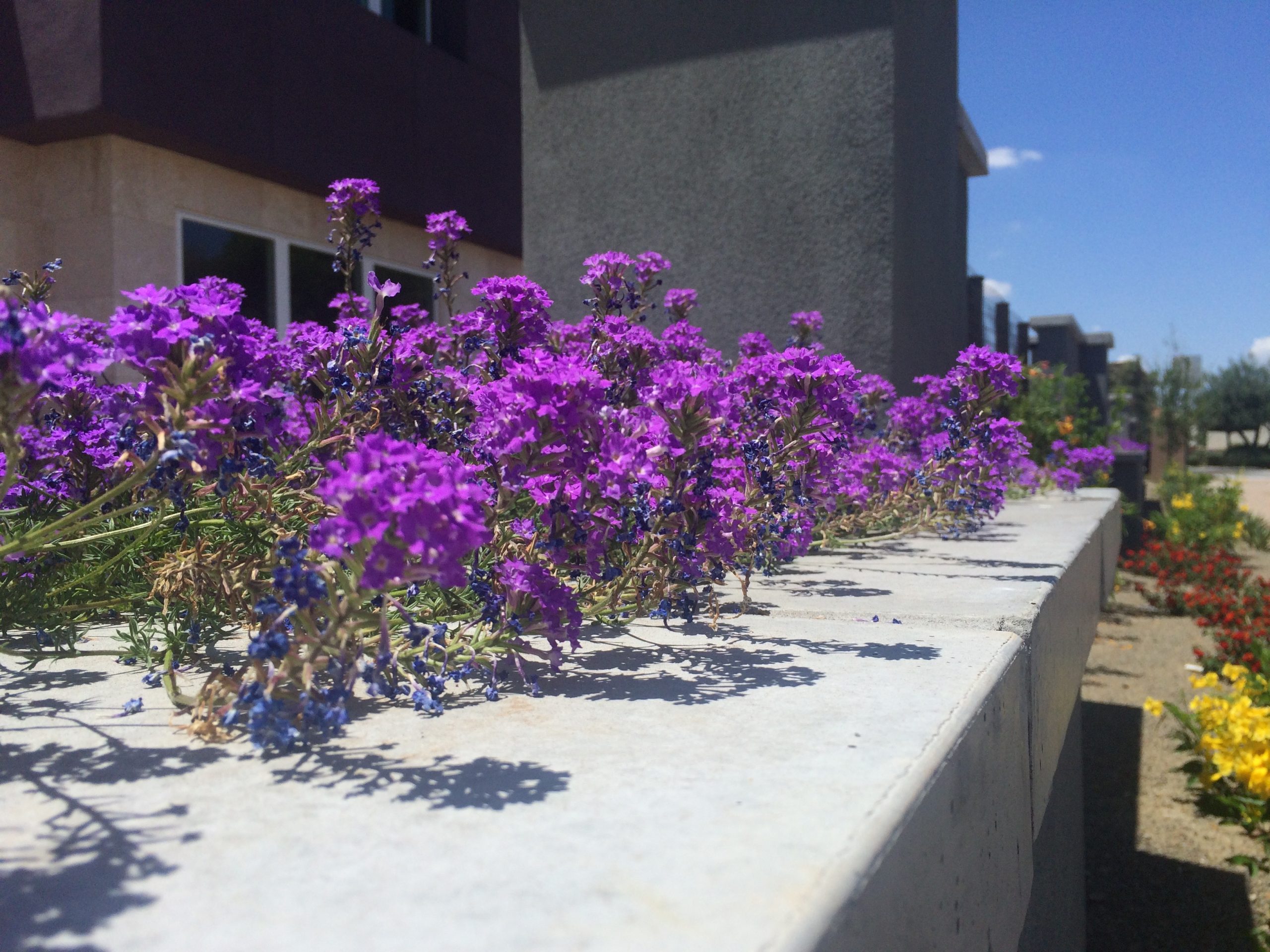When it comes to desert landscaping you often hear the terms “Xeriscape” and “zeroscape” used interchangeably, but have you ever wondered what the difference is between the two? Xeriscape and zeroscape are definitely not the same. Let’s explain:
- Xeriscape comes from the Greek word “xeric” meaning dry or arid.
- Zeroscape is basically a mispronunciation of Xeriscape.
- The correct way to say Xeriscape is “zeer-i-scape” not “zee-ro-scape.”
- Xeriscape is a type of landscape design that uses low-water-use or drought-tolerant plants that require little to no supplemental irrigation.
- Zeroscape is a yard filled predominantly with gravel and dirt containing few or no plants.
- Xeriscape uses design and planning.
- Zeroscape lacks design and planning.
While Xeriscape refers to a landscape with plants, hardscape, and yes, sometimes turf, zeroscape may describe a sterile landscape of gravel and maybe a boulder or a palm tree or cactus. Just because we live in the desert doesn’t mean our yards must look barren. A Xeriscaped yard planted with many species of beautiful drought-tolerant plants can be lush and beautiful while enhancing the beauty and function of an urban or suburban landscape. Xeriscapes also beautify the neighborhood, reduce cooling costs, create a sense of place, attract hummingbirds, butterflies, and other desired wildlife. Xeriscaped yards make sense because they are one of the best water-efficient landscaping options.
Xeriscape: Landscaping with Style in the Arizona Desert is a fantastic design guide and describes the seven basic principles of Xeriscape:

- Good landscape planning and design
- Low-water-use plants
- Appropriate turf areas
- Efficient irrigation
- Soil improvements
- Use of mulches
- Appropriate maintenance
Good Landscape Planning and Design
A good plan is the best way to guide you throughout the landscape process. Having a plan in place will help keep you focused, especially if you can’t afford to install your landscape all at once. There are many free online resources to help you change your water-thirsty or barren yard to a lush, beautiful Xeriscape. Also, visit a local demonstration garden for ideas and to see how different plant types look placed with each other and amongst beautiful hardscape elements.
Get even more guidance on designing your Xeriscape with free classes offered by Water – Use It Wisely partners. There are free classes about plant selection, pruning, Xeriscape design, irrigation efficiency, and more. View our Workshop/Events Calendar. Most providers will allow people who live outside of their service areas to attend. Confirm space availability with the class host.
Low-Water-Use Plants
Choosing the right low-water-use plants for your space can be tricky. Luckily, there are a few guides to help decide which plants will work best for your yard:
- Landscape Plants for the Arizona Desert
- Arizona Department of Water Resources Landscaping
- Transform your Landscape from Drab to Fab
- Sustainable Landscape Guide for the City of Surprise
Appropriate Turf Areas
Grass (often called turf) may be a desired component in a well-designed Xeriscape yard. It is the only plant material that can handle foot traffic and it provides a softer surface for kids’ sports or dog’s paws. Real turf is also cooler than artificial turf. In case you missed it, read this Water – Use It Wisely article about artificial turf.
Efficient Irrigation
Routine irrigation checks will help keep your system running smoothly. Several water providers offer a variety of free irrigation classes. The smart home water guide, Find & Fix Leaks that are Draining your Budget, will help you use your water meter to check for leaks both inside and outside your home. The city of Scottsdale has a handy checklist to help you keep your irrigation system in good working order. Of course, efficient irrigation also means applying the right amount of water at the right times. Use Landscape Watering by the Numbers to learn how much and how often to water your landscape.
Soil Improvements & Use of Mulches
Soil improvements will help your landscape thrive and can reduce water use. Good soil will hold moisture and helps plants grow. Learn more about soil improvement here. Mulches will also keep the soil moist and help reduce water use. Here are some tips on mulching.

Appropriate Maintenance
Maintenance is an important aspect of Xeriscaping. Planting the right plant in the right place will reduce the amount of pruning you need to do, however, there will be some maintenance with a Xeriscaped yard. Prune only when necessary and avoid pruning when the weather is hot and dry. Read more about pruning in the desert here. In summer, never remove more than one-third of your lawn’s height in one mow. Taller grass keeps the soil cool and reduces stress. Leave grass clippings on the lawn to return nutrients to the soil. Consider skipping overseeding for a healthier Bermuda grass in the spring and summer.
Water is one of the most precious resources, and Xeriscape design allows us to have beautiful yards while conserving water in the desert. With the guides and resources listed above, you can transform your drab zeroscape into a fab Xeriscaped yard. Share your success with us on social media. We’d love to hear from you.
For more information about Xeriscaping and water use in the desert, subscribe to the Water – Use It Wisely newsletter.



